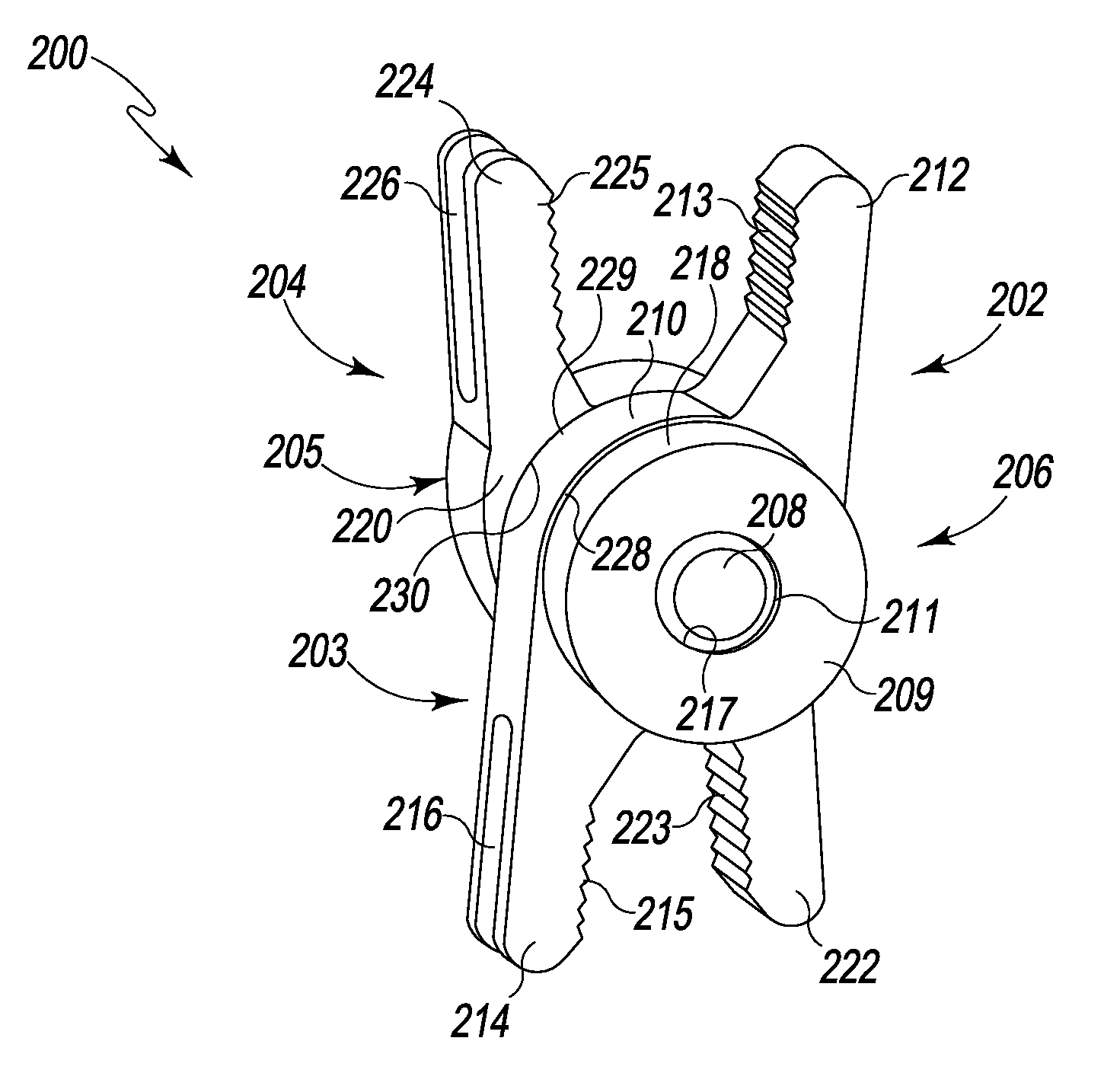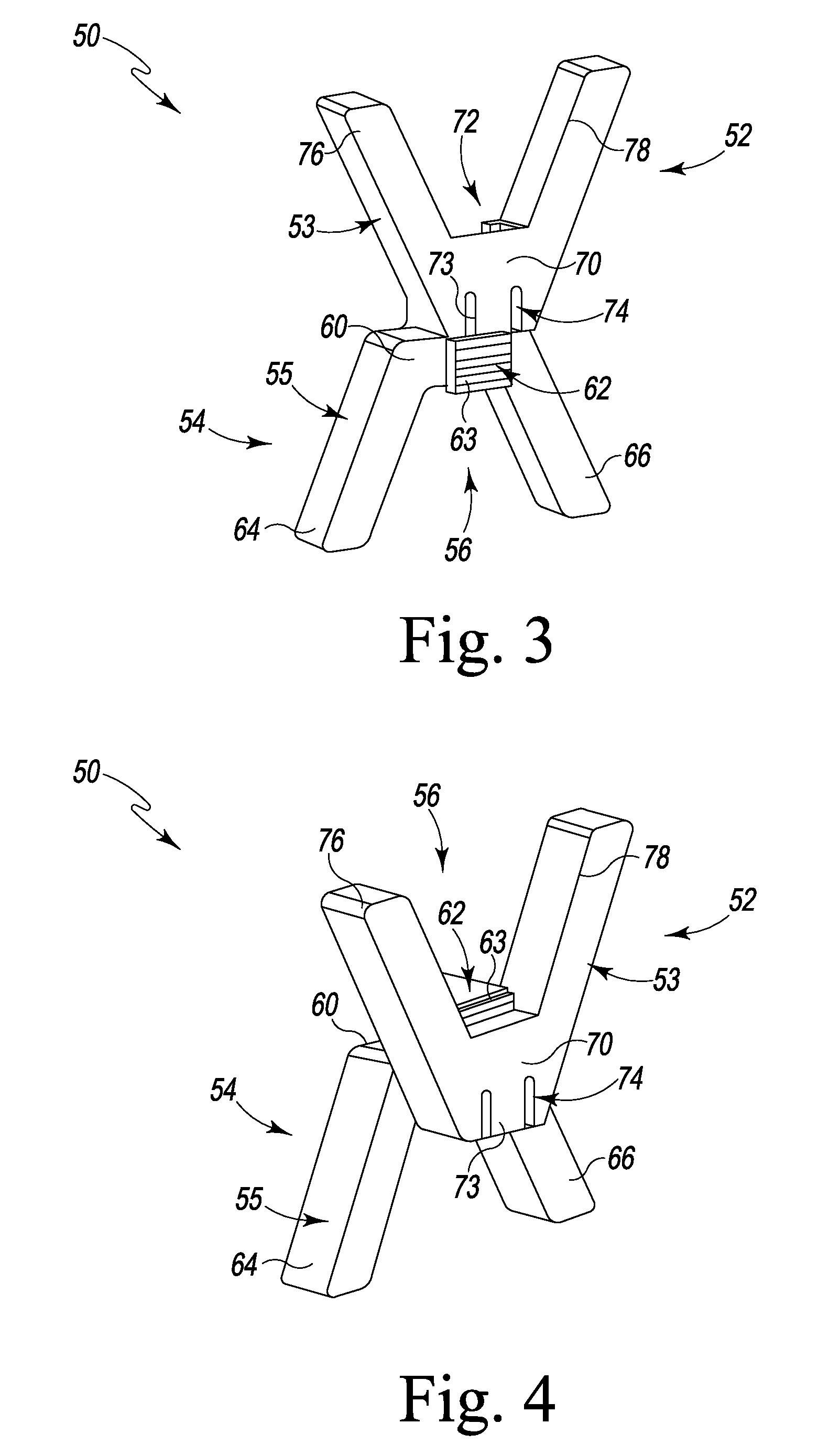Spinal clips for interspinous decompression
a technology of interspinous decompression and spine, applied in the field of spine implants, can solve the problems of nerve compression, depression, general physical deterioration, obesity, etc., and achieve the effect of reducing the risk of spinal stenosis, and preventing the spinal canal from narrowing
- Summary
- Abstract
- Description
- Claims
- Application Information
AI Technical Summary
Benefits of technology
Problems solved by technology
Method used
Image
Examples
Embodiment Construction
[0031]Referring to FIGS. 1-2, there is shown one exemplary embodiment of a spinous process clip generally designated 10 fashioned in accordance with the present principles. The spinous process clip 10, is used for posterior, lateral and / or posterior-lateral insertion into the interspinous process space and thus is configured to retract or be closed prior to and during insertion, then expand or deploy once inserted onto the spine space with minimum tissue resection. The spinous process clip 10 is made from a biocompatible material such as PEEK (polyetheretherketone), titanium or stainless steel. It should be appreciated that other biocompatible materials may be used.
[0032]The spinous process clip 10 is characterized by a three-piece construction, namely a middle portion 12, a first lateral portion 14, and a second lateral portion 16. It should be appreciated that the nomenclature first and second is arbitrary. The first lateral portion 14 and the second lateral portion 16 are pivotal...
PUM
 Login to View More
Login to View More Abstract
Description
Claims
Application Information
 Login to View More
Login to View More - R&D
- Intellectual Property
- Life Sciences
- Materials
- Tech Scout
- Unparalleled Data Quality
- Higher Quality Content
- 60% Fewer Hallucinations
Browse by: Latest US Patents, China's latest patents, Technical Efficacy Thesaurus, Application Domain, Technology Topic, Popular Technical Reports.
© 2025 PatSnap. All rights reserved.Legal|Privacy policy|Modern Slavery Act Transparency Statement|Sitemap|About US| Contact US: help@patsnap.com



